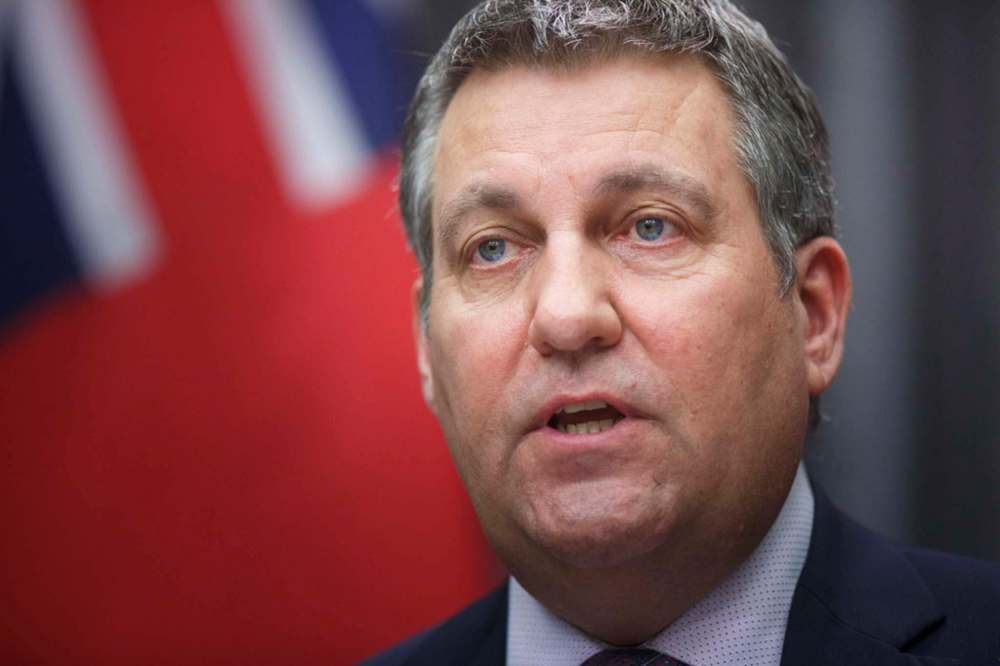Province moves to seize levers of public school system control
Read this article for free:
or
Already have an account? Log in here »
To continue reading, please subscribe:
Monthly Digital Subscription
$0 for the first 4 weeks*
- Enjoy unlimited reading on winnipegfreepress.com
- Read the E-Edition, our digital replica newspaper
- Access News Break, our award-winning app
- Play interactive puzzles
*No charge for 4 weeks then price increases to the regular rate of $19.00 plus GST every four weeks. Offer available to new and qualified returning subscribers only. Cancel any time.
Monthly Digital Subscription
$4.75/week*
- Enjoy unlimited reading on winnipegfreepress.com
- Read the E-Edition, our digital replica newspaper
- Access News Break, our award-winning app
- Play interactive puzzles
*Billed as $19 plus GST every four weeks. Cancel any time.
To continue reading, please subscribe:
Add Free Press access to your Brandon Sun subscription for only an additional
$1 for the first 4 weeks*
*Your next subscription payment will increase by $1.00 and you will be charged $16.99 plus GST for four weeks. After four weeks, your payment will increase to $23.99 plus GST every four weeks.
Read unlimited articles for free today:
or
Already have an account? Log in here »
Hey there, time traveller!
This article was published 15/03/2021 (1730 days ago), so information in it may no longer be current.
If Manitobans are hoping to see major savings in bureaucratic costs through the elimination of the province’s 37 school divisions, they’re going to be disappointed.
On Monday, the Pallister government announced the biggest overhaul of the public school system in modern history, including abolishing school trustees and creating a new provincial education authority.
The key selling point: reducing bureaucratic overlap and putting more resources into the classroom.
Manitoba governments, both NDP and Progressive Conservative, have long-argued school divisions are too “top heavy.”
That’s why then-NDP premier Gary Doer in 2002 did what predecessor Gary Filmon couldn’t find the political will to do in the mid-1990s (despite a 1994 boundaries review commission urging the amalgamation of school divisions) and cut school boards to 37 from 54.

Like Premier Brian Pallister this week, Doer sold his plan on the need to redirect administrative spending to front-line education.
The results were disappointing.
After accounting for the harmonization of collective agreements and other costs that arose through amalgamation, the net financial benefits were minor.
The Pallister government is taking it much further.
There will still be “directors of education” appointed in each of the 15 new regions created under the plan (essentially former superintendents), along with other local bureaucrats. But there will be no school divisions.
There could be some savings there, but not much. The province estimates it “may” save $40 million a year under the plan — chump change in a $2.5-billion public schools operating budget.
When pressed for details on how the province arrived at the $40-million projected savings, including how many school division staff would be out of a job, officials said they had no details.
What it suggests is the proposed provincial education authority could be nearly as expensive as the status quo.
When pressed for details on how the province arrived at the $40-million projected savings, including how many school division staff would be out of a job, officials said they had no details.
Education Minister Cliff Cullen said the new system will give parents more input into their children’s education through the creation of school community councils.
That’s unlikely. The new structures sound more like glorified parent councils that will probably have little, if any, real authority over the day-to-day operations of schools.
That power will rest entirely with the new provincial authority, which will be run by government-appointed board members (and two token elected officials who will likely be crowded out of any meaningful decision making).
Education Minister Cliff Cullen said the new system will give parents more input into their children’s education through the creation of school community councils. That’s unlikely. The new structures sound more like glorified parent councils that will probably have little, if any, real authority over the day-to-day operations of schools.
The province says the new model will eliminate funding inequalities between regions.
Under the existing system, school divisions with richer property tax bases are able to provide students with broader education opportunities than poorer ones. That’s addressed to some degree through equalization funding, but the disparities remain.
The new proposed system could help improve that if funding is distributed more evenly through a central authority, once school property taxes are eliminated.
The loss of local school board autonomy under the new proposal is less clear.
In theory, parents are supposed to have direct input into education through their elected school trustees. In reality, most people don’t even know who their school trustees are. If they do, they don’t have much sway over them.
School boards tend to operate in isolation with little public input. The feared loss of local autonomy is probably overstated.
Monday’s announcement was mostly about the provincial government assuming direct control over the public school system.
It’s not about saving money and it’s not about giving parents greater input into the system. It’s about ensuring government has the administrative levers to implement education policies on a provincewide basis without filtering them through a patchwork of 37 different school boards.
Considering Manitoba’s poor academic outcomes over the past 10 to 20 years, that may not be a bad thing.
tom.brodbeck@freepress.mb.ca

Tom has been covering Manitoba politics since the early 1990s and joined the Winnipeg Free Press news team in 2019.
Our newsroom depends on a growing audience of readers to power our journalism. If you are not a paid reader, please consider becoming a subscriber.
Our newsroom depends on its audience of readers to power our journalism. Thank you for your support.









